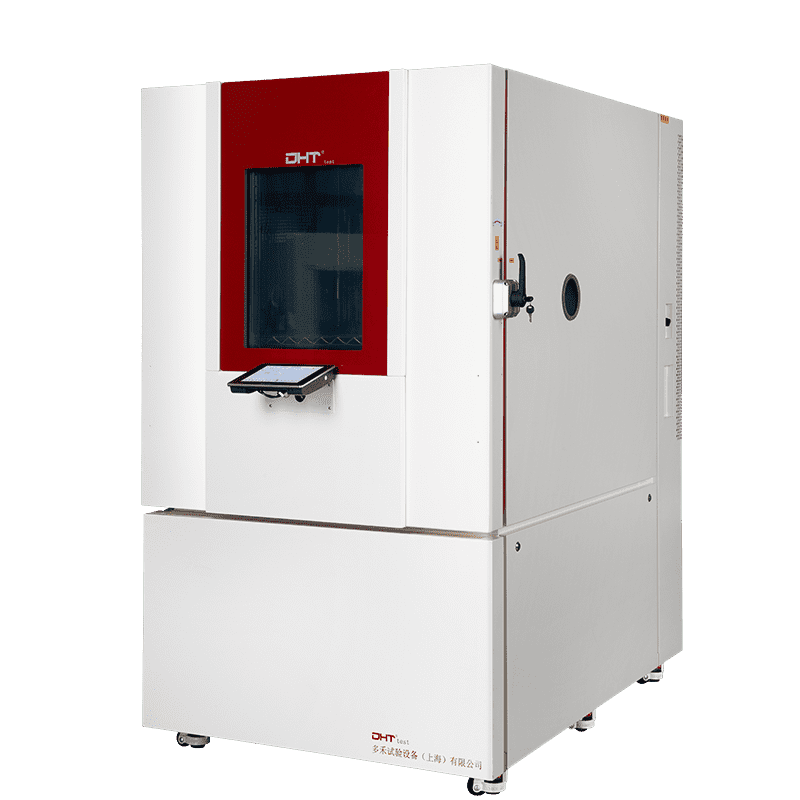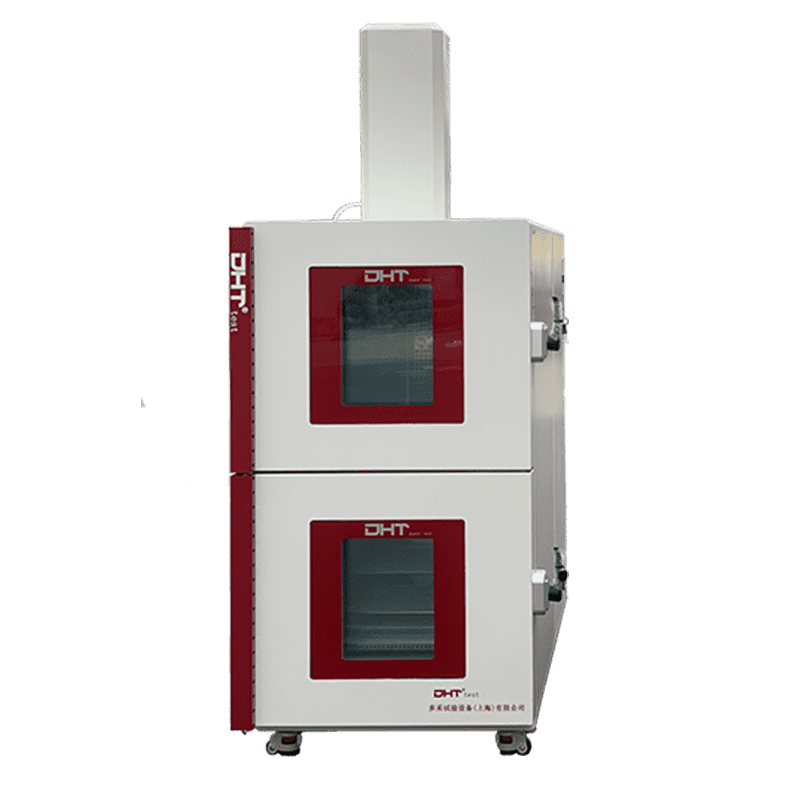Written by Robin
Senior Engineer, Doaho Test (DHT®)
In modern manufacturing and the electronics industry, product reliability has become a critical benchmark for evaluating a company’s competitiveness. Whether in automotive electronics, telecommunications equipment, aerospace components, new energy batteries, or medical instruments, customers are demanding ever-higher standards of stability and service life. To detect and resolve potential weaknesses as early as possible in both R&D and production, HALT (Highly Accelerated Life Testing) and HASS (Highly Accelerated Stress Screening) have emerged as essential methodologies.
This article explores what HALT testing is, how it differs from HASS, and why both are indispensable in environmental test chamber applications—helping engineers and manufacturers choose the right reliability verification solutions.
What is HALT Testing?
HALT testing, short for halt accelerated life testing, is an accelerated stress testing method applied during the product development stage. It subjects products to stresses far beyond normal operating conditions—such as extreme high and low temperatures, rapid thermal cycling, high-intensity vibration, and electrical overloads—to quickly reveal potential design flaws and weak points.
The objective of a halt test is not to verify compliance with standards, but to deliberately push the product to failure in order to identify its design limit and destruct limit. From this process, R&D engineers can:
-
Identify weaknesses in materials, structures, and design;
-
Optimize component selection and circuit design;
-
Evaluate product performance under extreme conditions;
-
Improve overall robustness and reliability.
Example: Using a HASS testing chamber or temperature chamber for HALT, engineers may cycle a product rapidly from -70℃ to +150℃ while applying multi-axis random vibration. Testing continues until functional degradation or outright failure occurs. This approach can expose hidden defects within days or even hours—problems that might otherwise take months or years to surface in the market.
The Difference Between HALT and HASS
HALT and HASS are often confused, but their roles and objectives within the product lifecycle are distinctly different.
Testing Stage
-
HALT: Applied during R&D to reveal design weaknesses.
-
HASS: Applied during production to detect manufacturing defects and ensure batch consistency.
Stress Levels
-
HALT: Uses stress levels far beyond normal conditions, sometimes approaching or exceeding the product’s destructive limits.
-
HASS: Applies elevated stresses but within safe operating margins—sufficient to trigger latent defects without damaging good units.
Objectives
-
HALT: Detect and resolve design weaknesses.
-
HASS: Identify and eliminate manufacturing defects.
Complementary Roles
-
HALT establishes limit data to guide safe stress levels for HASS.
-
Together, halt & hass testing form a complementary reliability system, ensuring high reliability from design through mass production.
Key Stress Factors in HALT Testing
In practical halt accelerated life testing, the following environmental stresses are typically applied:
Thermal Stress
-
Applied via high/low temperature chambers or rapid thermal cycling chambers.
-
Purpose: Evaluate solder joint reliability, differences in material expansion coefficients, and durability of seals and structural components.
Vibration Stress
-
Conducted using six-degree-of-freedom random vibration systems.
-
Purpose: Expose weak solder joints, loose connectors, and structural resonances.
Combined Stress
-
Simultaneous application of temperature, humidity, and vibration.
-
Purpose: Simulate real-world environments and trigger complex failure modes.
Electrical Stress
-
Applied through voltage or current overloads.
-
Purpose: Detect overheating, insulation breakdown, or abnormal power consumption.
The Core Role of Test Chambers in HALT and HASS
Neither HALT nor HASS can be implemented without high-performance, specialized test equipment. Environmental test chambers, including dedicated HASS testing chambers, are central to the process—not merely as “extreme condition generators,” but as precision tools enabling reliability engineers to control stress variables and reproduce real-world scenarios.
Key chamber features include:
-
Wide Temperature Range & High Accuracy Advanced chambers typically operate from -100℃ to +200℃ with control accuracy up to ±0.5℃. This ensures the ability to exceed normal operating limits during HALT testing while maintaining safe, effective ranges for HASS.
-
Rapid Thermal Cycling Capability Temperature change rates of 5℃/min or higher replicate real-world extremes such as rocket launches, cold starts in automotive systems, or rapid electronic device activation. Fast thermal cycling is especially critical for revealing solder cracks and package failures.
-
High-Intensity Multi-Axis Vibration Six-degree-of-freedom random vibration platforms apply stress levels well beyond typical transportation conditions. This uncovers hidden issues such as loose structures, poor connector contacts, and latent solder joint defects.
-
Combined Stress Application In real environments, stress factors rarely occur in isolation. For example, high heat with high humidity combined with vibration accelerates fatigue, corrosion, and component failure. Chambers must support multi-stress profiles to closely replicate operational conditions.
-
Stability & Repeatability Beyond extremes, test chambers must deliver consistent, reproducible results across multiple cycles and product batches—especially crucial for HASS in production screening.
For manufacturers, investing in the right test chamber goes beyond completing test requirements. It is a cornerstone of quality assurance, helping reduce early failure rates, shorten development cycles, lower warranty costs, and strengthen brand reputation. In this sense, the test chamber is not merely a laboratory tool but a strategic asset in reliability engineering.
The Value of HALT and HASS
Reduced Early Failure Rates
-
HALT identifies design flaws, preventing early-life “infant mortality” failures.
-
HASS removes defective units introduced during manufacturing.
Shortened Development Cycles
-
HALT testing accelerates defect discovery, reducing costly late-stage redesigns.
Improved Customer Satisfaction
-
Products validated by halt & hass testing demonstrate superior reliability and inspire greater customer trust.
Lower Overall Costs
-
While testing requires upfront investment, it significantly reduces long-term recall and warranty expenses.
Conclusion
HALT testing (halt accelerated life testing) is a powerful methodology for uncovering design flaws during R&D, while HASS serves as an effective production-phase screen for manufacturing defects. Together, halt and hass testing establishes a complete reliability assurance system spanning product design to mass production.
For the test chamber industry, delivering equipment that meets HALT and HASS requirements is more than a demonstration of technical capability—it is a decisive factor in helping customers improve product quality and gain competitive advantage. In today’s increasingly demanding global market, mastering and properly implementing halt test methodologies not only enhances R&D efficiency but also strengthens brand credibility.
As a dedicated leader in reliability test equipment, DHT® is committed to providing high-performance HALT/HASS test chamber solutions. We focus not only on wide temperature ranges, rapid thermal cycling, and advanced vibration capabilities, but also on stability, repeatability, and compliance with international standards. Every test powered by DHT® equipment delivers real value to product reliability. Choosing DHT® means partnering with a trusted expert—empowering innovation, ensuring reliability, and securing global competitiveness.


